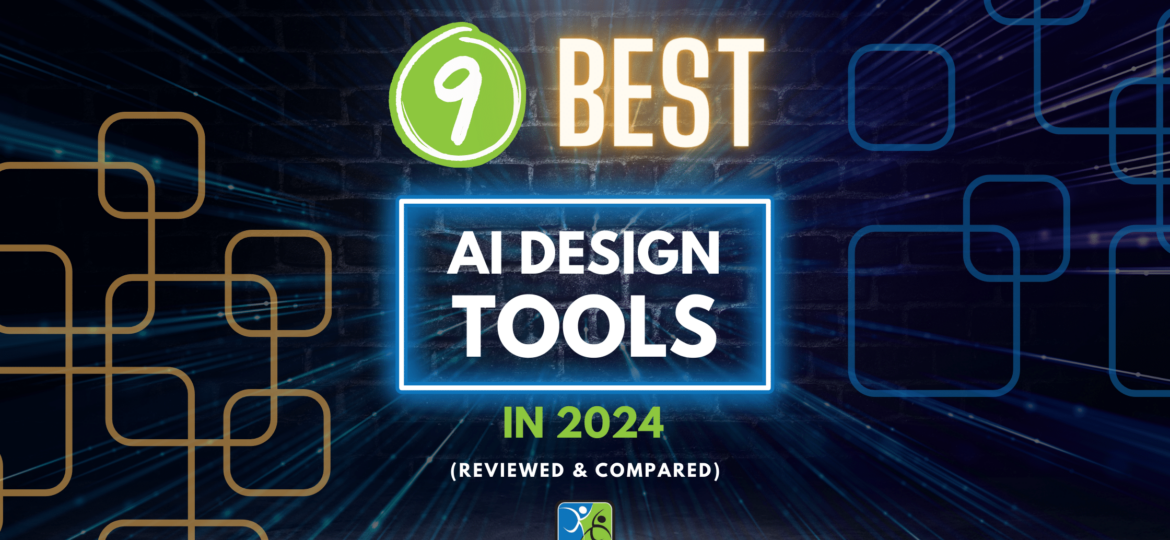
Creating unique, engaging content that strikes a balance between informational and accessible can be a challenging task, especially when delving into the dynamic and technically intricate world of AI design tools. As we step into 2024, the landscape of artificial intelligence in design has both expanded and evolved, presenting a plethora of tools that promise to revolutionize workflows, enhance creativity, and streamline project execution. In this comprehensive review, we’ll dive into the 9 Best AI design tools of 2024, comparing their features, usability, and how they stand to change the game for designers across various industries.
1. Creativity Unleashed: AIDA (Artificial Intelligence Design Assistant)
Starting strong, AIDA is not just a tool; it’s a design partner. It distinguishes itself by understanding complex design briefs, converting them into visually compelling designs. Its ability to learn from user feedback, adjusting its output based on preferences and past interactions, sets a new benchmark for personalized design solutions. AIDA shines in web design, graphic creation, and even interactive media, making it a go-to for designers looking to push boundaries without getting bogged down in technical details.
2. Vector Magic: CanvasAI
Vector graphics are the backbone of digital design, and CanvasAI stands out as a game-changer. Its AI-driven vectorization technology can convert raster images to vectors with unprecedented precision, preserving nuances and details that other tools often miss. CanvasAI’s user-friendly interface and robust editing features make it ideal for professionals and hobbyists alike, bridging the gap between concept and high-quality scalable graphics.
3. Prototype Perfection: ProtoAI
ProtoAI revolutionizes the prototyping process, allowing designers to create functional, interactive prototypes from sketches or wireframes in minutes. Its AI algorithms understand design elements and user flow intuitively, enabling rapid iteration and testing. This tool is invaluable for UX/UI designers, product managers, and anyone involved in the digital product development process, ensuring that user feedback is integrated early and effectively.
4. Color with Intelligence: ChromaAI
Color theory is a fundamental aspect of design that can make or break a project. ChromaAI leverages AI to offer smart color palette suggestions based on the latest trends, user demographics, or psychological principles. Its ability to analyze images and generate harmonious color schemes simplifies the decision-making process, enabling designers to create visually stunning and strategically aligned projects.
5. Content Comes Alive: StoryboardAI
In the realm of animation and video production, StoryboardAI is a groundbreaking tool. It transforms scripts or story outlines into detailed storyboards, complete with character poses, facial expressions, and scene layouts. This accelerates the pre-production process, allowing animators and filmmakers to visualize and refine their narratives with ease, fostering creativity and collaboration from the get-go.
6. Type Genius: FontAI
FontAI is a revelation for typography enthusiasts and designers. By analyzing text content and understanding the context, it suggests fonts that enhance readability, engagement, and aesthetic appeal. Whether it’s branding, web design, or publication layout, FontAI ensures the typography complements the overall design, elevating the user experience and reinforcing the project’s message.
7. Image Enhancement: EnhanceAI
Photos and images are integral to design, but not all assets are created equal. EnhanceAI steps in to upscale, denoise, and optimize images without sacrificing quality. Its deep learning algorithms can even restore historical photographs or adapt low-resolution images for high-definition outputs. For designers working with diverse visual assets, EnhanceAI is a lifesaver, ensuring consistency and quality across all media.
8. Design Efficiency: LayoutAI
LayoutAI focuses on optimizing workspace and workflow, automating tedious layout and alignment tasks. It intelligently arranges elements based on design principles, user behavior data, and accessibility standards. This tool is particularly beneficial for web and print designers, reducing production time while enhancing the overall aesthetic and functional quality of the layouts.
9. Creative Exploration: InspireAI
Lastly, InspireAI acts as a muse for the digital age. It generates ideas, concepts, and visual inspiration based on a brief or mood board. This tool is perfect for overcoming creative blocks or exploring new styles and themes. It’s not just a source of inspiration but a collaborative partner that broadens the horizon for creatives.
The landscape of AI design tools in 2024 is rich and varied, catering to every facet of the design process. From conceptualization to execution, these tools offer solutions that enhance creativity, streamline workflows, and ensure high-quality outputs. As artificial intelligence continues to evolve, so too will its role in the creative industries, promising an exciting future where technology and creativity intersect in unprecedented ways.
Each tool reviewed offers unique capabilities, but together, they represent a comprehensive suite that can dramatically transform the design process. Whether you’re a seasoned professional or a budding designer, incorporating these AI tools into your toolkit can lead to more efficient workflows, innovative designs, and ultimately, captivating

